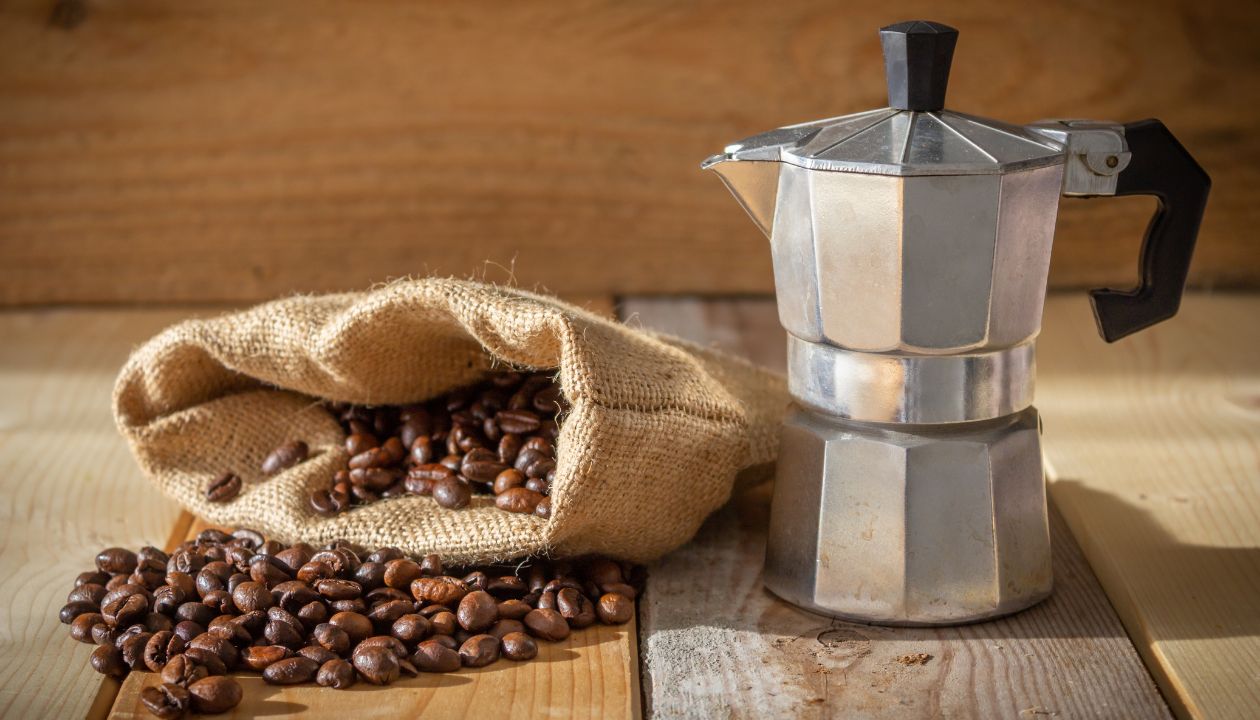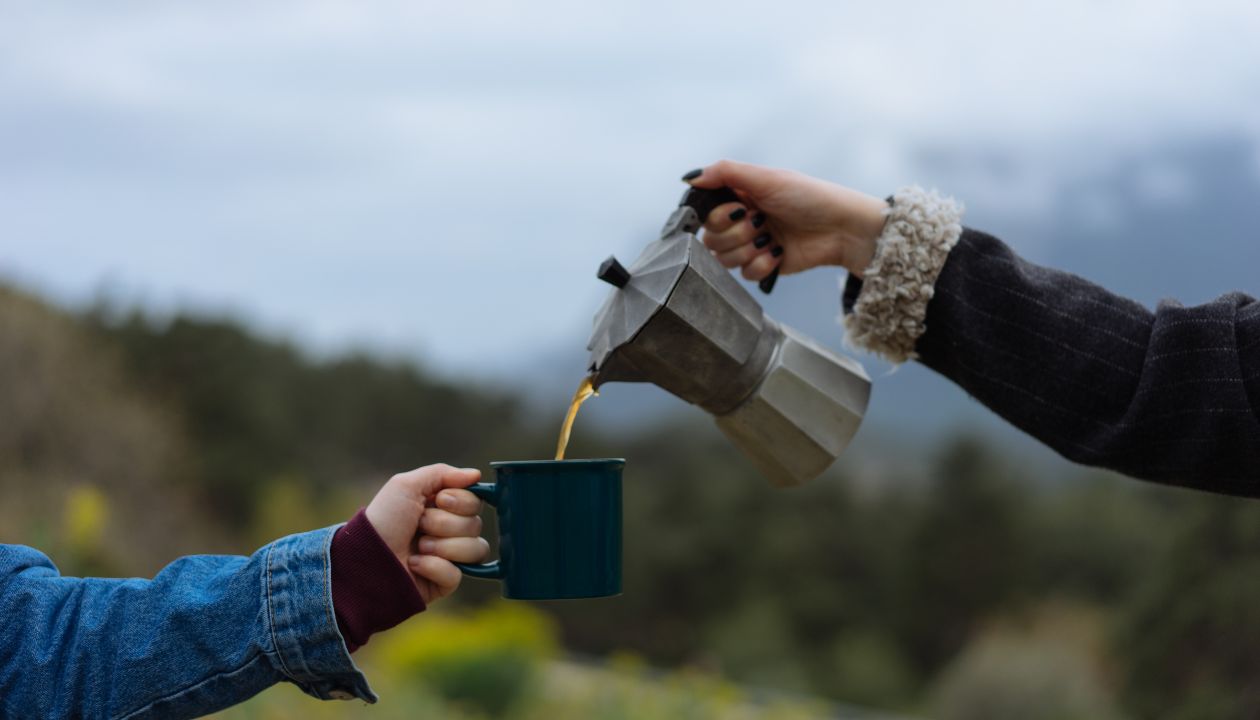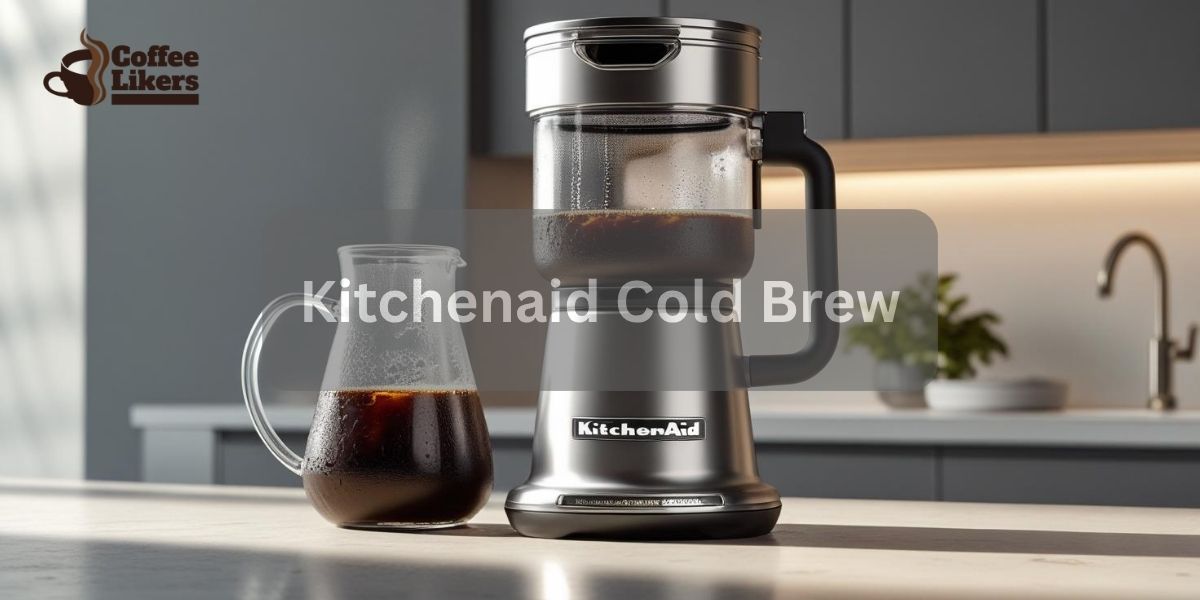Introduction
You prefer espresso most. That’s fantastic! But what exactly is it? You don’t like how much it costs to buy them regular basis? And you don’t want to purchase large, pricey equipment for your home?
Since you like espresso but don’t like the price tag that comes with an espresso maker, it’s time to look into how to make coffee with stovetop espresso makers (Aka Moka Pots). How do you get crema on stove top espresso? The Moka pot becomes hard to beat for those who want a thick crema strong cup of coffee by make perfect stovetop espresso.
For generations, these modest stovetop coffee makers have been a tradition of the Italian household, producing espresso-style coffee without the price and inconvenience of huge equipment. In this blog, we’ll show you what is stovetop espresso coffee maker, is and how to use it for delicious coffee at home with coffee granules.
What is a stovetop espresso maker?
So, firstly let’s know about the stove top espresso maker. The Moka pot, named after the Yemeni city of Mocha, was designed in 1933 by an Italian inventor, Alfonso Bialetti. So it is also called Bialetti Moka express or Bialetti moka pot. The Moka pot also referred to as a stovetop espresso machine/ espresso pot can brew a very powerful cup when used properly. They are called stovetop espresso makers.
They’re a little pickier than modern brewers, but their unique extraction, which offers a stronger flavor, is difficult to reproduce. Even though they are termed stovetop espresso machines, the coffee they brew is not the same as an espresso coffee grinder.
For brewing, an espresso machine is a manual coffee machine that requires much higher pressure and then percolated into the top chamber with coffee percolators. Remove the Moka pot from the heat and get the resulting cup of great coffee that is robust and rich, akin to espresso, with a little lovely foam on top. A stovetop espresso maker is inexpensive and makes a type of pot of coffee quickly and easily.
Start with a low heat setting if you’re using an electric stove. Using a gas stove is easier for coffee coming. This will allow you to better adjust the temperature, preventing the coffee from burning or the plastic handle from melting. The best coffee grind for a stovetop espresso machine is actually a medium grind espresso coffee ground.
Dark Roast espresso ground coffee is an excellent choice for expensive espresso. These beans are specifically roasted for making espresso. This coffee is a hand-selected blend of Central and South American coffees. Even though the coffee is rich and powerful, it remains smooth and simple to consume.
8 Steps of how to make coffee with stovetop espresso makers
Since you’re a newbie to Stovetop Espresso makers and don’t know how to create your favorite classic coffee house drinks, I’ve developed a convenient and simple coffee guide that will walk you into making great lattes, Americanos, and mochas with your new Moka pot brew. How to make latte with stovetop espresso maker? Maybe get started with these basic steps for using your stovetop espresso maker for home use :
1. Get Your Moka Coffee Maker Ready: Divide your stovetop espresso maker into three sections-
· The bottom part of the water
· Separate the filter basket from the pot’s bottom half.
· The upper chamber holds the finished coffee.
2. Grind the coffee: Fresh coffee beans should be ground to a medium coarse grind.
3. Add in filtered water: Pour filtered water into the bottom chamber after that. For a typical Italian-style Moka coffee, fill it just below the safety valve. It’s better to use an Italian stovetop espresso maker to make strong brew coffee.
4. Put the coffee grounds: Fill the filter funnel and tamp the medium-ground coffee beans. This is a critical step because under-filling might lead to brewing problems. Check to see whether it’s loaded!
5. Re-assemble the espresso maker: After that, insert your filter into the bottom chamber and securely screw the top chamber to the bottom.
6. Add heat: Place the stovetop espresso maker over medium to low heat with the top closed.
7. After a few minutes, the coffee will begin to percolate into the upper half of the pot. Allow the coffee to percolate until the top pot is half filled and gurgle on a gas stove, then turn off the heat and let the coffee finish brewing. If you’re using an electric stove, turn off the heat once you hear the coffee percolating; the residual heat will continue to brew the coffee.
8. Serve and enjoy as you’re a fan of espresso when the coffee is ready.

Do stovetop espresso makers make real espresso?
Stove-top espresso coffee is as strong as regular coffee. But using a Moka pot is not the same as using a coffee machine. It can’t create too much pressure to use steam pressure to force the coffee to be ready, some enthusiasts believe these Moka pots work even better.
Numerous Italian families wouldn’t be finished without a Moka Pot. How to make coffee with stovetop espresso makers? Put your stovetop espresso maker on with coffee and soft water, and leave the base of the pot on the stove, then the coffee maker works and starts to brew your desired coffee.
Despite the fact that they are called stovetop espresso machines, the coffee they produce is not the same as espresso. An espresso machine creates substantially higher pressure for brewing. Moka pots can have poor extraction since they use steam from your stovetop rather than pressure to drive the water through the grinds.
Another parameter (from the heat to the amount of coffee) may alter each time you make it. This can drastically change the flavor of your espresso. Another disadvantage is that if you use an aluminum Moka pot, it may have a metallic taste.
A few are stainless steel, removing the possibility of a metallic tone to the coffee. So it’s not a wise decision to make real espresso in the stovetop espresso machine.
What kind of coffee do you use in a stovetop espresso maker?
What coffee do you put in a stovetop espresso maker? We recommend brewing espresso roast coffee on the stovetop. A medium-dark roast is more suited to pressure brewing than a light roast, which tastes rather sharp and acidic coffee with a Moka pot on the stovetop.
Use a medium coffee grind for stovetop espresso machines. How to make coffee with stovetop espresso makers? The optimum grind, like with any coffee machine, is the key to effective extraction. If the grind is too coarse, the coffee will be weak, watery, and acidic. If you grind your coffee too fine, it will taste harsh and burn, so if you are a coffee fanatic, then don’t use like that way.
The ideal grind for a Moka pot coffee is moderate to medium-fine, which is coarser than an espresso machine but finer than a drip coffee maker. When rubbed between your fingers, medium-fine will feel grainy rather than powdered. It is important to note that espresso grind purchased from a store for electric espresso machines is usually too fine and may clog your Bialetti.
What’s the difference between Moka and espresso coffee?
Moka pot coffee can still be balanced, well-rounded, and sweet, but the taste profile is deeper and darker than usual. Espresso shots are typically 5-8 times stronger than standard drip coffee. These shots are extremely potent, full-bodied, and tasty.
The general rule for getting the appropriate Moka grind is to use grinds that are moderately fine (slightly finer than what a drip coffee machine uses) but not too fine. It should be somewhat coarser than an espresso grind. So, the grinding of espresso coffee is finer than Moka coffee.
The Moka Pot employs just fire (a stovetop) to boil water, whereas an espresso machine includes motors, heating elements, and electronics to effectively brew espresso. Modern espresso machines use 8-10 bars of pressure to produce espresso.
Depending on the equipment, this is 5-10 times the pressure of a Moka pot. Yes, the coffee brewed by Moka pots is robust and as near to espresso as you can without Moka pots is powerful and as near to espresso, as you can get without having an espresso machine.
You must use espresso-specific coffee with a medium grind. Standard American/ Northern European drip coffee (even “espresso blends”) will not work since they are not ground to the right consistency and contain too many bitter oils. Moderate espresso is ideal for use in Moka pots and is an excellent coffee to try.
Conclusion
Today our topic was how to make coffee with stovetop espresso makers, and we’ve learned about it. Everyone thinks that a stovetop espresso machine can make espresso coffee after hearing the name of the machine. Actually, Moka pots cannot make espresso coffee like a coffee shop. Ancient people tried to use this maker on the stove.
Nobody could blame them for believing that. It’s very puzzling – it’s technically known as a Moka pot, but people frequently refer to it as a “stovetop espresso machine” which is completely misleading. This pot gets better coffee only.
In comparison to espresso, Moka coffee tends to over-extract from the coffee grounds and leaves the coffee a little bit bitter. So expect stronger coffee with a higher caffeine concentration than normal.
Drink with caution! To clean your stovetop espresso maker warm water and a rough sponge are the best ways. And fill the pot with coffee ground level with the top of the filter, and the coffee begins to come out with steam. You must hear the coffee starts bubbling.
It is said that the older a Moka pot becomes, the better its coffee tastes. If you’re feeling ambitious and want to learn more about the top coffees than espresso, the Moka Pot is a terrific and affordable place to start. If you feel more innovative, you can experiment with alternative coffee brewing techniques!





Leave a Reply